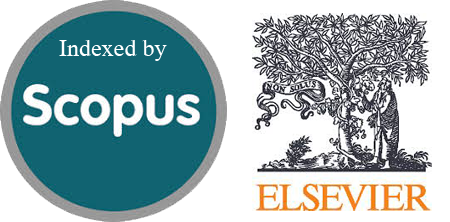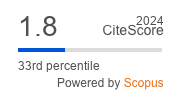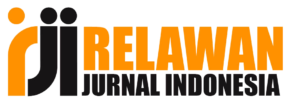Penerapan Metode Economic Order Quantity Pada Rancangan Aplikasi Inventory Control System
Abstract
The purpose of this research is the application of EOQ method in designing inventory control system application to control inventory in case study in Damkar Sub-Dept. of Warehouse Section - South Jakarta area. This research is carried out the existence of various inventory control problems, such as: uneconomical inventory control, unsafe stock, and difficult re-ordering. Then, to resolve the various issues in inventory control, it is necessary to apply the EOQ method in the inventory control system application. The design of system application in this research by using Unified Modeling Language (UML) approach. The results of this applied product research is a system application that allows system users to be able to control their inventory quickly, easily and accurately and provide reports in the form of graphs that are very helpful in decision making. The application of this system will be a very useful tool for optimal inventory control. This system application is expected to be a very useful tool for optimal inventory control.
Downloads
References
[2] Sukhia, KN et al, Introducing Economic Order Quantity Model for Inventory Control in Web based Point of Sale Applications and Comparative Analysis of Techniques for Demand Forecasting in Inventory Management, Pakistan : Department of Software Engineering, Fatima Jinnah Women University.2014
[3] M.R., Asrillah, Rancang Bangun Sistem Informasi Pembelian dan Perencanaan Persediaan Barang Pada CV. Jaya Tama, Surabaya : Sekolah Tinggi Manajemen Informatika& Teknik Komputer.2013
[4] Robert C. Bogdan dan Steven J. Taylor, Introduction toQualitative-Research methods, New York: John Wiley & Sons, 1975, pp.4
[5] Remick, Jarel. (2011). What Is a Web App? Here’s Our Definition, ( http://web .appstorm.net, diakses 3 Januari 2018.)
[6] Kumar Rakesh, Economic Order Quantity (EOQ) Model, India, : College University of Delhi.2016
[7] Y. M. Siagian, Supply Chain Management, Jakarta: Grasindo, 2005.
[8] Fahmi, Irham..“Analisis Kinerja Keuangan” , Bandung: Alfabeta, 2012
[9] Rasul, Agung Abdul et al, “Ekonomi Mikro, Mitra Wacana Media, Jakarta.2012
[10] O’Brien, James A. (2001). Introduction to Information Systems : Essentials for The Internetworked E-business Enterprise.10th Edition, IrwinMcGrawHill, New York.
[11]Pressman, Roger S. (2002). Rekayasa Perangkat Lunak Pendekatan Praktisi (Buku Satu). Yogyakarta: Andi.
[12] E.D, Widianto. “Pemodelan Sistem Dengan UML”. 2012
[13] Agarwal, Sachin, Economic Order Quantity (EOQ) Model : A Review, India, : SAIT, Indore, Madhya Pradesh.2014
Copyright (c) 2018 Jurnal RESTI (Rekayasa Sistem dan Teknologi Informasi)

This work is licensed under a Creative Commons Attribution 4.0 International License.
Copyright in each article belongs to the author
- The author acknowledges that the RESTI Journal (System Engineering and Information Technology) is the first publisher to publish with a license Creative Commons Attribution 4.0 International License.
- Authors can enter writing separately, arrange the non-exclusive distribution of manuscripts that have been published in this journal into other versions (eg sent to the author's institutional repository, publication in a book, etc.), by acknowledging that the manuscript has been published for the first time in the RESTI (Rekayasa Sistem dan Teknologi Informasi) journal ;








